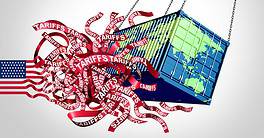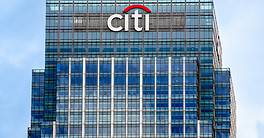Dynamism in the payments arena is driving change at banks and drawing new players into the field, expanding innovation and opportunity.

Online shopping accelerated greatly during Covid-19 lockdowns; and it has irreversibly changed the habits of consumers, who are devouring new payment methods like never before. This ravenous appetite for new payment experiences requires that banks be agile enough to offer or facilitate innovations, such as payments-as-a-service (PaaS), embedded finance, digital wallets, buy now/pay later, cryptocurrencies and emerging central bank digital currencies (CBDCs).
Moreover, this trend doesn’t stop at the consumer or retail level. Corporate supply chains are likewise seeing a rush of innovative next-generation payment methods. In combination with nontraditional competitors, a race toward real-time and exponential technologies—including advanced analytics, machine learning, hybrid cloud, extreme automation and intelligent workflows—this is driving changes to banking business models.
To give an idea of the scale of payment options available, Bank of America recently expanded its CashPro Payment API (application programming interface) to allow customers to access more than 350 payment types in 38 markets globally. The explosion of different cashless payment types and the arrival of so many new nontraditional participants—both fintech and “techfin” (e.g., Google, Amazon and Apple)—have upped the disintermediation stakes but also created opportunities for innovation and cooperation.
“Nobody is doing anything 100% on their own right now,” explains Carl Slabicki, co-head of Global Payments, BNY Mellon Treasury Services. As more payment options emerge, he predicts, “it will become a bit of a fragmented mess, and the banks that will succeed are the ones that can really stitch it all together.” The trick will be to manage all that complexity yet still deliver a safe and secure payment experience.
“Banks are realizing that payments are foundational,” insists Mike Kresse, division executive, B2B (business-to-business) and money movement at FIS, “which is why they need to be resilient, robust and able to be upgraded without the need for major heart surgery.”
With change being the only certainty, a cloud-based infrastructure provides financial institutions the agility required to meet customer expectations, regulations and any technological shifts that might come along in the future, without requiring rebuilds of core architecture.
“There has been a huge acceleration of cloud-based digital payments over the past 10 years, and I think it will increase over the next five years,” states Rachel Hunt, vice president of strategy and growth at Volante Technologies—a global provider of cloud payments and financial messaging. “While everyone talks about low cost and delivery in the cloud, the key thing for me is innovation.” In addition to customer demands, she notes, there is a rapidly changing landscape. “We must incorporate new standards, adapt to new regulations and think about new ways to pay,” she says.
The fact that it’s expensive, takes too long, [and] liquidity is … is a real call to arms.” — Dave Sissens, RTGS.global
Evolving from monolithic to flexible hybrid-cloud architectures can, according to Shanker Ramamurthy, global managing partner, Banking and Financial Markets at IBM Consulting, help banks unlock business value and the benefit of new technologies.
Messaging Modernization
Although cloud services can mitigate much of the friction caused by the proliferation of payment networks, a lack of interoperability between networks and countries is still a roadblock. “When it comes to interlinking existing payment systems, a lot of work is being done to align different rule sets and regulatory environments—and the size of this task should not be underestimated,” says Isabel Schmidt, co-head of Global Payments, BNY Mellon. “But it is not just about changes to the payment rails themselves. We must also consider how to effectively manage and optimize liquidity. As more payment systems develop, it is going to be more important to have a centralized view of your liquidity so that you can efficiently respond to payment requirements.”
Swift’s upcoming general rollout of the global standard for payments messaging, ISO 20022, will create a common language for payments data across the globe. “With ISO 20022 you can validate upfront that you have all the information. You need to pass that payment all the way straight through, which creates a better client experience; and you can process the payment-risk management processes within the bank,” BNY Mellon’s Schmidt adds.
Standardization via ISO 20022 is fortunately inevitable, says Andy Schmidt, vice president and global industry lead for banking at IT services company CGI: “The reality is that ISO 20022 is a common payment language; and if we are going to do cross-border real-time payments, we have to speak a common language.”
Swift has agreed to delay ISO 20022 migration until March 2023 to ease implementation; but for many, meeting the mandate will be a first step. “Everyone needs to go through a [ISO 20022] maturity model,” says Hunt. “First you need to be able to accept and send the ISO 20022 messages; however, ISO 20022 touches every single system in the bank, so you critically need to create an ISO canonical—and start benefiting from the value of ISO 20022, which is the enriched data—and that’s a strategic direction.”
Volante provides a range of ISO 20022 native offerings to help financial institutions meet the deadlines without changing legacy systems. “Neobanks have no tech legacy,” explains Hunt. “For a bank who has grown organically over the past hundred years, migration is going to be harder.”
Greater harmonization and enriched structured payments data will enable transaction banks to share strategic knowledge with customers; and while Slabicki says the low-hanging fruit is in leveraging data for risk and fraud detection, it could also allow banks to provide value-added insights to corporate clients based on specific payment and velocity trends. “It becomes a question of the customer—not our customer, but our customer’s customer—and building suitable use cases,” suggests Kresse. “A lot of our existing clients don’t have an operational data store where they can go in and index and search through specific types of payments, as it’s very hard to get from multiple systems. But the types of analytics that we’re making available come from a single payments area where they can drive analytics on specific customer segments and payment histories.”
Taking on the Competition
Embedded finance and platform banking are major growth areas where banks can provide their customers with a richer and broader set of capabilities. IBM’s Ramamurthy singles out DBS Bank and State Bank of India (SBI) for broadening the ecosystem. “They are not waiting for a customer to come to them,” he says. “They are extending the banking value chain further upstream or downstream, depending on how you think about it, to make the bank the destination site.” DBS created marketplaces to sell cars, holidays and properties—enabling the bank to offer adjacent services beyond mortgages, for example, including insurance and renovation loans. “By providing those kinds of capabilities, by the time you get to wanting a mortgage, the bank becomes a natural place where the mortgage originates from.”
He notes that regulators, open banking, APIs and standardization efforts are all helping to level the playing field by taking away some of financial institutions’ natural advantages. “It’s a combination of these reasons forcing banks to rethink their models and adopt an ecosystem platform-based approach,” says Ramamurthy. “It’s not about just automating existing processes, it’s about rethinking them end to end and digital transformation. Because paving the cow path is going to get you only so far—it’s just going to make your complex processes more automated.”
As banks create value along an ecosystem, some of it sticks to the bank. A mobile app from SBI called YONO, which stands for “you only need one,” is a mobile app for tens of millions of customers that offers more than banking. “The SBI is able to provide its customers with better value when they, for example, book hotels or make e-commerce purchases in Flipkart or Amazon. The customer can get superior value from the e-commerce end merchant by going through YONO,” he explains. “The only requirement is you must use an SBI product when transacting in the other e-commerce websites. It’s really taking the fight to the competition and effectively commoditizing it by taking some of the profit margin from the e-commerce websites and passing it on to their customers, and taking a slice in terms of deeper customer relationships.”
The Unified Payments Interface (UPI) has made India the largest real-time payments (RTP) market in number of transactions (48.6 billion in 2021) and the Reserve Bank of India released its Payments Vision 2025 in June 2022 to future-proof payments on the subcontinent. “Vision 2025 is going to take India to the next level of payment transactions,” states Rajashekara V. Maiya, vice president and global head of business consulting at Infosys Finacle. “With UPI transactions today, we process almost 6 billion transactions per month—now we are looking at around a minimum 50% [compound annual growth rate] every year.”
Unsurprisingly, India’s success at promoting RTP is being copied by its neighbors and beyond. “This is now being adopted in many more countries surrounding Asia, and we know that it’s going to be replicated elsewhere,” Maiya says. “Australia is now looking at how to implement RTP, and there are conversations happening in Canada.”
Nonetheless, each hurdle surmounted leads to a new one. “The next one we’ve got to solve is cross-border, instantaneous payments,” suggests Philip Panaino, global head of Cash at Standard Chartered. “That’s the next holy grail after many countries have developed domestic instantaneous fast payment schemes. But perfecting instant payments cross-border between parties, where you have to convert currencies at speed, where someone’s asleep and someone is awake, is complex and exciting.”
One potential solution for cross-border RTP is using blockchain with either CBDCs or other digital assets. Baton Systems is a fintech specializing in post-trade processing using distributed ledger technology (DLT), and CEO Arjun Jayaram insists cross-border payments are nothing but a foreign exchange transaction plus two local transactions. “Money is not just currencies, it’s currencies and securities and anything that’s of value.” Baton has built a platform that allows any bank or other financial institution to essentially have a node of the network that connects to bank accounts and all the places where a firm has its assets, and it’s able to move those assets between parties. “It’s a DLT base, but it is not tokenizing money—it’s not moving real assets to the real world—so you actually have access to your currencies and your securities at the end of it,” Jayaram says, adding, “This process normally takes 24 to 48 hours. We are able to settle within three minutes on a payment process.”
Dave Sissens, CEO of RTGS.global, a global network that offers real-time liquidity and settlement for commercial banks, financial market infrastructures (FMIs) and central banks, says the underlying liquidity movements in wholesale banking are still running on legacy rails. “It can often take days to get large values from one country to another. Cross-border transactions go through multiple hands and money moves in one direction whilst messages move in another—so it’s pretty broken.”
He says the G20 Roadmap for Enhancing Cross-Border Payments is a real boost to dealing with that friction: “The fact that it’s expensive, takes too long, liquidity is opaque and people enter into transactions in the hope that they’ll get to the other side, is a real call to arms to change the way cross-border settlement works.” RTGS.global is a new FMI: a global payment system that lets clients move wholesale money in one currency to another, supported by central bank money. “It’s a 24-hour liquidity ‘fabric,’ backed by real money—not crypto, not stablecoins—which can be moved instantly,” he says.
It’s not just fintechs that are looking to find DLT-based payment solutions. Card companies facing disintermediation from digital payment models have made several strategic moves over the last several years to tokenize accounts. When Visa launched B2B Connect in 2019—to make high-value corporate payments using DLT to underpin its network—it soon realized there was a $120 trillion B2B payments opportunity. “When you talk to corporates about cross-border payments, they talk about the lack of visibility, a lack of transparency and a lack of predictability when the funds will be arriving,” states Ben Ellis, senior vice president and global head of Visa B2B Connect. “It felt like there’s a better way, and that’s what we were looking to do with B2B connect as a multilateral network.”
Statista predicts digital payments will reach $8.49 trillion in 2022, with a 12.31% annual growth rate through 2027—resulting in a total of $15.17 trillion by then. With such a large payments pie on the table, both banks and newcomers are finding innovative ways to carve out a share while satisfying the demands of customers, who are now used to buying whatever they want, whenever they want, in any way they choose.



